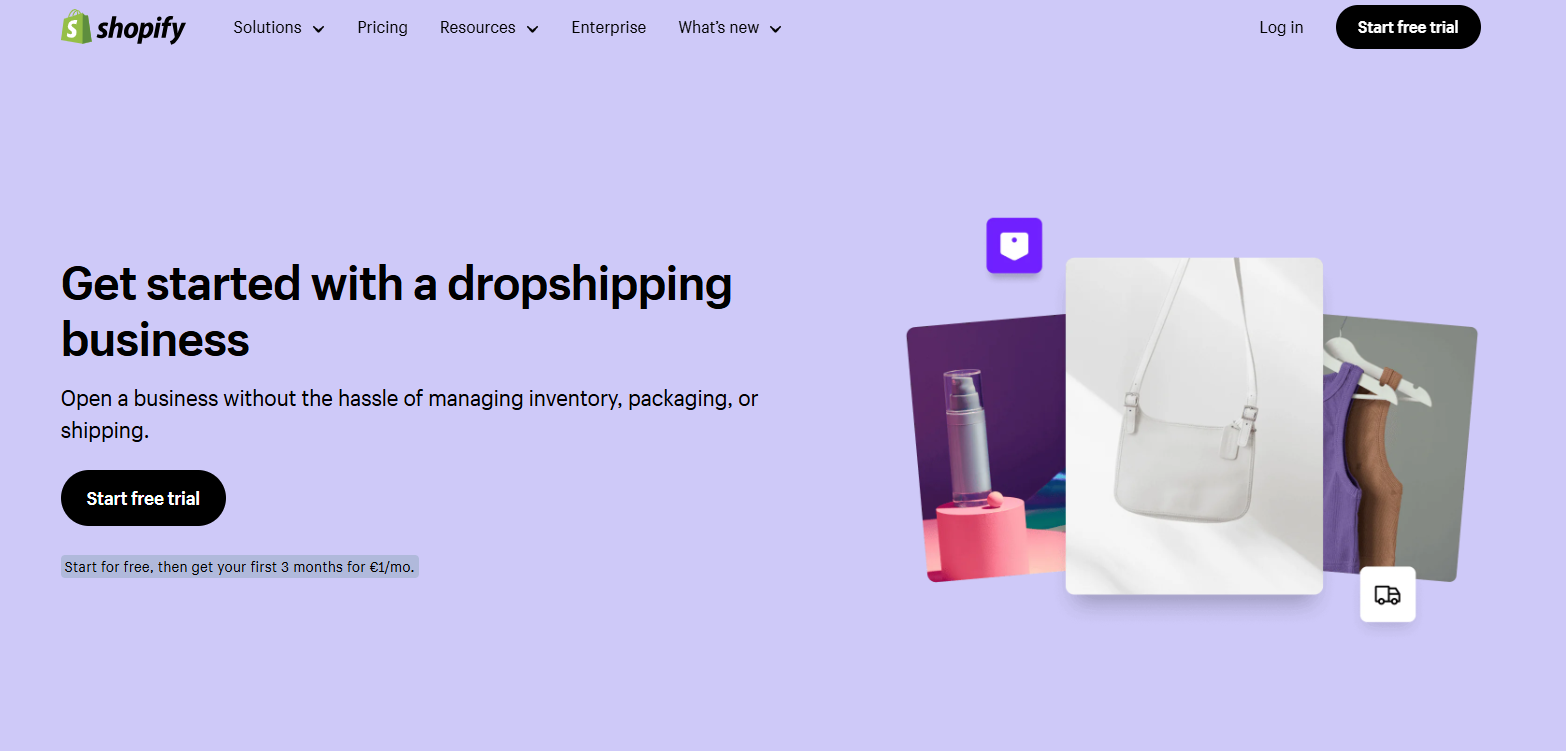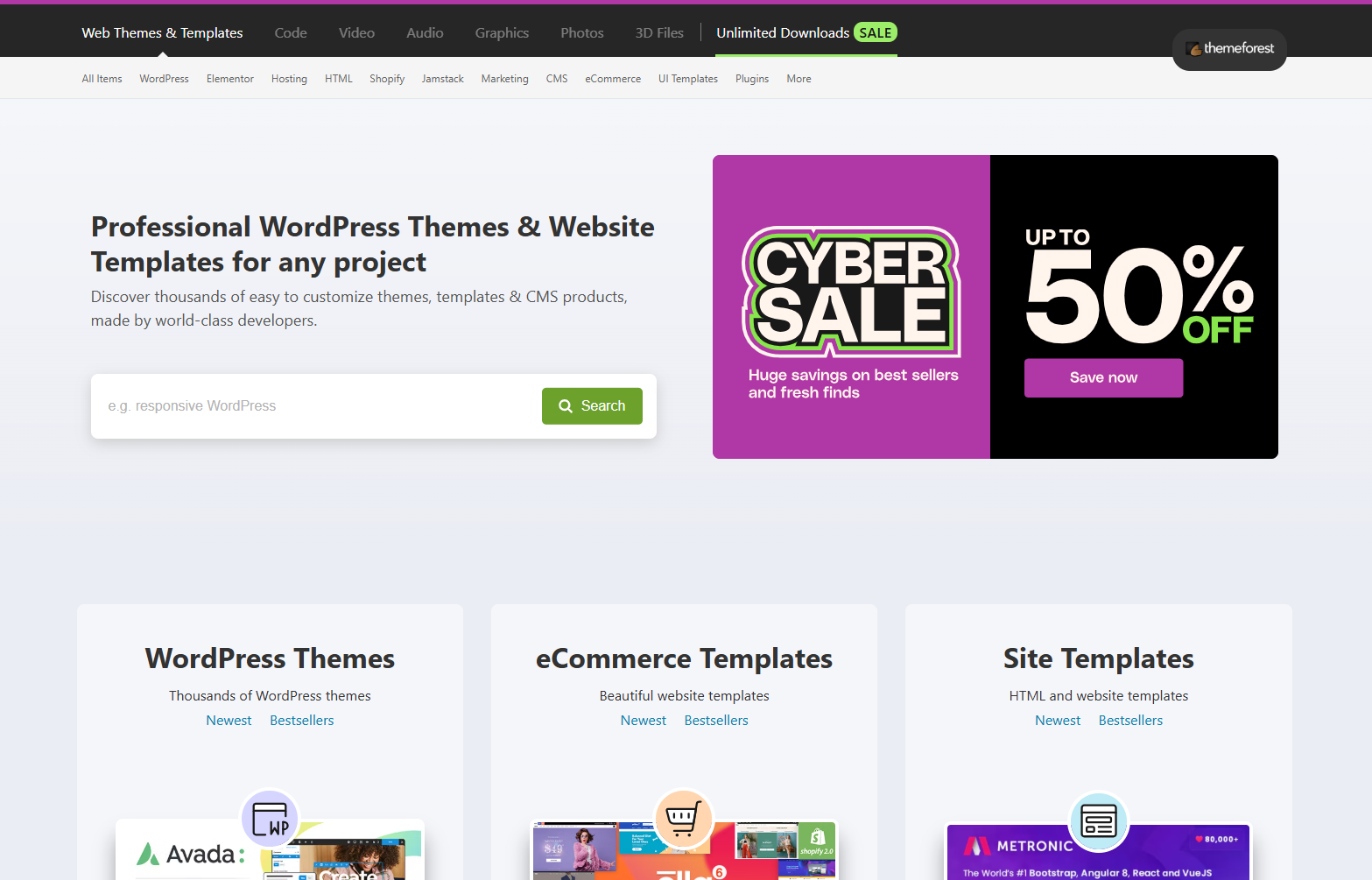Dropshipping is a low cost, inventory free business model that has gone crazy. You sell products online without holding any stock. This means you can start with minimal investment, sometimes as low as $100.
In 2025 dropshipping is only getting bigger because of its flexibility and scalability.
Here are the key steps to launch and how to start dropshipping business:
- Choosing a profitable niche: Use Google Trends to find trending products.
- Researching competitors: Analyze competitors to understand the market.
- Finding reliable suppliers: Evaluate suppliers on product quality and shipping times.
- Building an e-commerce store: Use Shopify for ease of setup and management.
- Implementing marketing strategies: Use social media and influencer partnerships.
- Testing products before launch: Check market demand and product quality.
Follow these steps and you can start a dropshipping business model in 2025.
What is Dropshipping?
Dropshipping is a retail fulfillment method where an online store doesn’t keep the products it sells in stock.
Instead, when a customer buys, the online store buys the product from a third-party reliable supplier who then ships it directly to the customer. The store owner never handles the product physically.
How Dropshipping Works?
Here’s a step by step:
- Customer Places an Order: A customer visits your ecommerce website and places an order.
- Order is Forwarded to Supplier: You forward the order to your supplier.
- Supplier Ships to Customer: Supplier packs and ships the product to your customer.
- You Earn a Profit: Your profit is the difference between what you charge your customer and what you pay your supplier.
Benefits of Dropshipping
The benefits of dropshipping business makes it a great option for many aspiring entrepreneurs:
| Low Startup Costs | You don’t need to invest in inventory management upfront so you can start with minimal investment. |
| No Physical Inventory Required | You don’t have to manage or store physical products, saving on storage and logistics costs. |
| Flexibility | You can operate your ecommerce business from anywhere with an internet connection. |
| Scalability | You can scale your dropshipping business by adding new products without worrying about inventory management constraints. |
So dropshipping business is a low risk way to start an ecommerce business and is perfect for anyone looking to get into the online retail space.
Picking Your Niche
Choosing a niche for your dropshipping online store is one of the most important decisions you’ll make.
The right dropshipping niche will set you up for a successful dropshipping business, the wrong one will waste your time and resources.

Why Picking the Right Niche Matters?
- Market Demand: A good niche means there’s market demand for your products. Without demand, no amount of marketing will work.
- Competition: A smart niche will help you avoid highly competitive markets where big players dominate.
- Profitability: Some niches have higher profit margins than others so it’s easier to achieve your financial goals.
Tools to Find Profitable Niches
Use tools like Google Trends and Facebook Audience Insights to get data on a profitable niche in 2025.
Google Trends

This tool allows you to see how search queries have evolved over time. You can see trends and seasonality so you can choose a dropshipping market niche with sustained or growing interest.
Example:
If you’re considering the fitness niche, searching for terms like “home workout equipment” on Google Trends can show if interest is increasing.
Facebook Audience Insights

This social media marketing platform gives you detailed demographics and insights into Facebook users. You can analyze data based on age, location, interests and more to find niches with engaged audiences.
Example:
If you’re considering the beauty industry, Facebook Audience Insights can show you which products resonate with different demographics.
Choosing the right niche is the foundation of all the next steps in your dropshipping business journey. Use these analyzing tools wisely to make an informed decision that aligns with market demand and consumer behavior trends.
Competitor Research
Researching competitors is a crucial part of your dropshipping business. Knowing what your competitors are doing well and where they’re failing will give you valuable insights to carve out your own success.
Why Competitor Research Matters?
Competitor research helps you:
- Identify market trends and demand
- Understand pricing
- See what marketing tactics work
- Find gaps in the market you can fill
Tools and Methods to Analyze Competitors
Use these tools and techniques to analyze your competitors:
- Google Alerts: Set up alerts for specific keywords in your niche. This will keep you updated on what your competitors are up to.
- SEMrush: This SEO tool will show you what keywords your competitors are ranking for, their backlinks and overall dropshipping website performance.
- Social Media Insights: Analyze your competitors’ social media presence to see their engagement strategies. Facebook, Instagram and X (former Twitter) have built in analytics that can be very telling.
- SimilarWeb: Use this tool to get an overview of your competitor’s website traffic sources, audience demographics and more.
- Ahrefs: Another SEO analysis tool, Ahrefs gives you data on organic search traffic, backlinks and competitive keyword gaps.
How to Conduct Competitor Analysis
| Identify Key Players | List down the top players in your niche |
| Examine Their Websites | Note the design, user experience and product range |
| Review Customer Feedback | Look at reviews on their site and third-party platforms like Trustpilot or Google Reviews |
| Analyze Marketing Efforts | See their ad campaigns, email marketing and content marketing. |
By knowing who you’re up against through competitor analysis tools and methods, you’ll be able to position your dropshipping business in the market.
Finding Suppliers for Your Products
Finding reliable suppliers is key to your dropshipping business.
Here’s how to evaluate and choose the best dropshipping suppliers ones for your niche:
1. Supplier Directories
Use popular dropshipping platforms like AliExpress, Doba and SaleHoo.
These dropshipping services platforms have extensive lists of dropshipping suppliers with reviews and ratings from other dropshippers.
2. Product Quality
- Samples: Ask for samples to see the product quality for yourself. Do a product research.
- Reviews: Analyze customer reviews on the supplier’s page and independent review sites.
- Product Images: Make sure product images are clear, accurate and of the actual product.
3. Shipping Times
Ask about average shipping times to your target market. Find dropshipping suppliers who offer ePacket or similar fast-shipping options to reduce delivery times.
4. Supplier Communication
Test their communication by asking them questions about their products and services. Good international suppliers should give you clear, prompt and detailed answers.
5. Supplier Reliability
Look for a dropshipping supplier who have been around for a long time.
Check their dropshipping business model and credentials where possible.
6. Pricing and Profit Margins
Make sure the supplier’s pricing allows you to stay competitive and have a reasonable profit margin.
Using these methods will help you find trustworthy suppliers which is key to product quality and customer satisfaction.
Read this blog post about best dropshipping suppliers for your online store in 2025.
Setting Up Your E-commerce Store
Your online store is the core of your dropshipping business.

Platforms like Shopify and WooCommerce are user-friendly to get you started.
Here’s a step by step ecommerce store guide:
1. Sign Up and Choose a Plan:
- For Shopify, go to Shopify’s website and sign up for an account. You can read more about setting up your Shopify store here.
- WooCommerce users need to have a WordPress site first. Install the WooCommerce plugin from the WordPress dashboard.
- For choosing the best dropshipping websites check out this blog post.
2. Domain Name:
Choose a unique and relevant domain name for your niche.
Example:
If your niche is eco-friendly home products, you might choose a domain name like:
EcoHavenLiving.com
This domain is:
- Unique: Stands out from generic names.
- Relevant: Clearly tied to eco-friendly and home-related products.
- Memorable: Easy for users to remember and associate with the niche.
Here are some additional tips for choosing a great domain name:
Keep It Short and Simple
- Shorter names are easier to remember and type.
- Avoid complex words, numbers, or hyphens that might confuse users.
- Example: Use GreenNest.com instead of The-Best-Green-Home-Products.com.
Make It Niche-Relevant
- Include a keyword related to your dropshipping business niche to help with SEO and clarity.
- Example: If you sell fitness gear, try FlexGear.com or ActiveFitHub.com.
Check Availability
- Ensure your domain is available and not already trademarked. Tools like Namecheap or GoDaddy can help with this.
Think About Extensions
- .com is the most popular and widely recognized, but alternatives like .co, .store, or .shop can work if your desired .com isn’t available.
- Example: EcoHaven.store could work if EcoHaven.com is taken.
Ensure It’s Easy to Spell
- Avoid words with multiple spellings or those that might be hard to pronounce.
- Example: HealthyHarvest.com is better than HlthyHrvest.com.
Make It Future-Proof
- Avoid overly specific names that could limit your dropshipping business if you expand.
- Example: If you start by selling yoga mats but may expand to general fitness, choose ZenActive.com instead of YogaMatWorld.com.
Use Domain Generators
- Tools like LeanDomainSearch or Shopify’s Business Name Generator can help spark ideas based on your niche.

3. Theme:
- Shopify has free and paid themes. Browse here through them and choose one that matches your brand.
- WooCommerce also has themes in the WordPress theme repository or marketplaces like ThemeForest.

4. Customize Your Store:
- Use the drag-and-drop builder to customize your store’s layout, colors, fonts etc.
- Add basic pages like Home, Shop, About Us, Contact and FAQ.
5. Upload Products:
Import products from your chosen dropshipping supplier. Make sure to write product descriptions, product categories and add high quality images.
6. Payment Gateways:
- Shopify has multiple payment gateways likePayPal, Stripe and Shopify Payments.
- WooCommerce has extensions for many payment processors.

7. Shipping Settings:
Set shipping costs and rates according to your supplier’s policy and make sure it’s clear to customers when they handling and shipping products.
8. Launch Your Store:
Before going live, preview your online store on different devices to make sure it’s mobile friendly.
Optimizing your online store for search engines (SEO) will increase visibility.
Use keywords in product titles, descriptions and meta tags. Make sure your site loads fast and mobile friendly — over 50% of online shopping is done on mobile devices.
Setting up an online store may seem overwhelming at first but platforms like Shopify and WooCommerce makes it easy for you to focus on growing your business.
If you want to read more about setting up a Shopify website, check this blog post.
Secure Payment Processing Systems
Payment processing for dropshipping business is a key part of running an ecommerce store.
Popular payment gateways like PayPal and Stripe are used widely because of their ease of integration and security.
Payment Gateways
- PayPal: Has buyer protection policies so customers trust it.
- Stripe: Integrates with multiple ecommerce platforms and supports multiple currencies.
Secure Transactions
- SSL Certificates: Make sure your website has SSL encryption to protect customer data.
- Monitoring: Keep an eye on transactions to detect and prevent fraud.
- Clear Policies: Display clear return and refund policies to build trust.
Follow these and you’ll establish credibility and smooth payment processing for your dropshipping business.
Marketing Strategies
Marketing is the backbone of a dropshipping business. With many options available, you need to focus on what works.
If you want to know how to do dropshipping branding, read our blog post here.
Social Media Ads
Social media platforms like Facebook, Instagram and TikTok have advertising tools for ecommerce businesses.
You can:
- Target specific demographics: Ads can be customized by age, interests, location etc.
- Retarget potential customers: Follow up with visitors who showed interest but didn’t purchase.
- Use visual user generated content: Engaging images and videos can showcase your products.
Example:
Launch an Instagram ad campaign with visuals of your best selling products to drive traffic, to attract customers to your dropshipping business store.
Influencer Partnerships
Partnering with influencers in your niche can expand your reach. Influencers have built trust with their target audience so their endorsement is powerful.
Consider:
- Micro-influencers: Smaller but highly engaged target audience can give better conversion rates.
- Product reviews or unboxing videos: Authentic content that resonates with followers.
Example:
Partnering with a fitness influencer to promote your workout gear through real testimonials and engaging posts.
Content Marketing
Creating content helps in establishing authority and driving organic traffic to your store.
Here are:
- Blogging: Write posts related to your niche that answer questions and provide value.
- SEO optimization: Make sure your content ranks on search engines by using keywords.
Example:
A blog post “Top 10 Fashion Trends in 2025” that mentions and links back to products in your store.
Marketing dropshipping products requires a mix of paid ads, influencer collaborations and content creation. These attract potential customers and build long term customer loyalty and engagement.

Test Products Before Launching Your Store
Testing the market demand for your products before launching your dropshipping business store is key. This step helps you find winning products that resonate with your target audience.
Here’s why:
| Reduce Risks | By testing you can avoid investing in products that won’t sell. |
| Customer Feedback | Testing early allows you to get customer feedback which can inform product improvements. |
| Marketing | Knowing what works lets you optimize your marketing. |
| Inventory Management | Helps in making inventory decisions. |
Run small scale ads or offer limited time promotions to test interest and get valuable insights. Also, apply principles from Marty Cagan’s “Inspired” to your product testing and selection dropshipping process.
Legal When Starting a Dropshipping Business
Understanding the legal landscape is important when starting a dropshipping business in 2025.
Here are the key areas to focus on:
Business Registration and Structure
- Business Entity: Decide to register as sole proprietorship, partnership, limited liability company or corporation. Each has different implications for liability and taxation.
- Licenses and Permits: Get any business license or permits required by your state.
Tax Obligations
- Sales Tax: Make sure you comply with dropshipping sales tax collection and remittance in states where you have tax nexus. Tools like TaxJar can automate this process.
- Income Tax: Keep records of your income and expenses for income tax reporting. Consult a tax professional to know more about deductions and filings.
Consumer Laws
- Return Policies: Put return policies on your website to comply with consumer laws.
- Privacy Policies: Have a privacy policy that explains how customer information is collected, used and protected.
Intellectual Property
- Trademarks: Don’t use logos, names or images that may infringe existing trademarks.
- Product Descriptions: Make sure all product descriptions and images are accurate to avoid false advertising.
By considering these legal legitimate business aspects you’ll protect your business from potential risks and focus on growth and excellent customer service.
New Dropshippers Face These Challenges (And How to Overcome Them)
Starting a dropshipping business comes with its own set of challenges.
Here are the common obstacles and practical solutions to overcome them:
1. Finding Suppliers
New dropshippers struggle to find suppliers.
Solution: Use dropshipping supplier directories like AliExpress dropshipping and SaleHoo, read customer reviews and test sample products before committing.
2. Shipping Times
Long shipping times can annoy customers and hurt your store’s reputation.
Solution: Communicate expected delivery times on product pages and use ePacket shipping for faster delivery.
3. Customer Service
Without control over inventory, returns and refunds can be messy.
Solution: Have a clear return policy, good communication with suppliers and multi channel customer support.
4. Marketing
Solution: Use social media ads, influencer partnerships and content marketing to build brand awareness and drive traffic to your store with a dropshipping marketing strategy.
5. Thin Margins
Profit margins in dropshipping are thin due to competition.
Solution: Upsell, bundle products and offer value added services to increase average order value.
Now you know the common challenges and solutions to start a successful dropshipping business in 2025!
Dario’ Conclusion
Dropshipping is one of the most low risk and accessible business models for beginners. By not having to hold inventory you can launch an ecommerce website with minimal upfront investment.
With the right strategies, tools and niche you can still make money in the fast growing ecom space.
Key Takeaways
- Choose the Right Niche: Use Google Trends to find products with growing demand. A good niche means profit and less competition.
- Know Your Competitors: Use tools like SEMrush and Ahrefs to research market trends, pricing and successful marketing strategies.
- Find a Good Supplier: Evaluate suppliers for product quality, shipping time and communication to ensure customer satisfaction.
- Build a Professional Store: Platforms like Shopify dropshipping make it easy, from domain setup to product listing and payment gateway integration.
- Market Effectively: Social media ads, influencer partnerships and content marketing are key to driving traffic and converting.
- Test Products Before Launch: Validate product demand through small ads or promotions to minimize risk and maximize returns.
It’s scalability and flexibility makes dropshipping business perfect for location independent businesses. As long as you have good suppliers, customer satisfaction and solid marketing strategies the possibilities are huge.
Ecommerce dropshipping automation tools are getting better and more consumers are shopping online, dropshipping business will be profitable as a business model in 2025 and beyond.
Frequently Asked Questions about “How to Start Dropshipping”
How do I find suppliers for my dropshipping products?
To find suppliers, check out popular directories like AliExpress, Doba or SaleHoo. Make sure to evaluate suppliers based on product quality, shipping and customer reviews to ensure they’re reliable.
What tools can I use for competitor research?
You can use competitor analysis tools like SEMrush, Ahrefs or SpyFu to analyze your competitor’s strengths and weaknesses. This will help you understand market positioning and find opportunities to differentiate.
How do I choose a niche for my dropshipping store?
Choose a niche by researching market trends using Google Trends and Facebook Audience Insights. Make sure it’s something you’re interested in and has demand and profit potential in 2025.
How to start a dropshipping business?
These are the steps: choosing a profitable niche, competitor research, finding suppliers, building a storefront, payment gateways, marketing, product testing and legal.
What are the common challenges for beginners?
Intense competition, finding suppliers, managing customer service and shipping issues. To overcome these, research thoroughly, build strong supplier relationships and excellent customer support.



